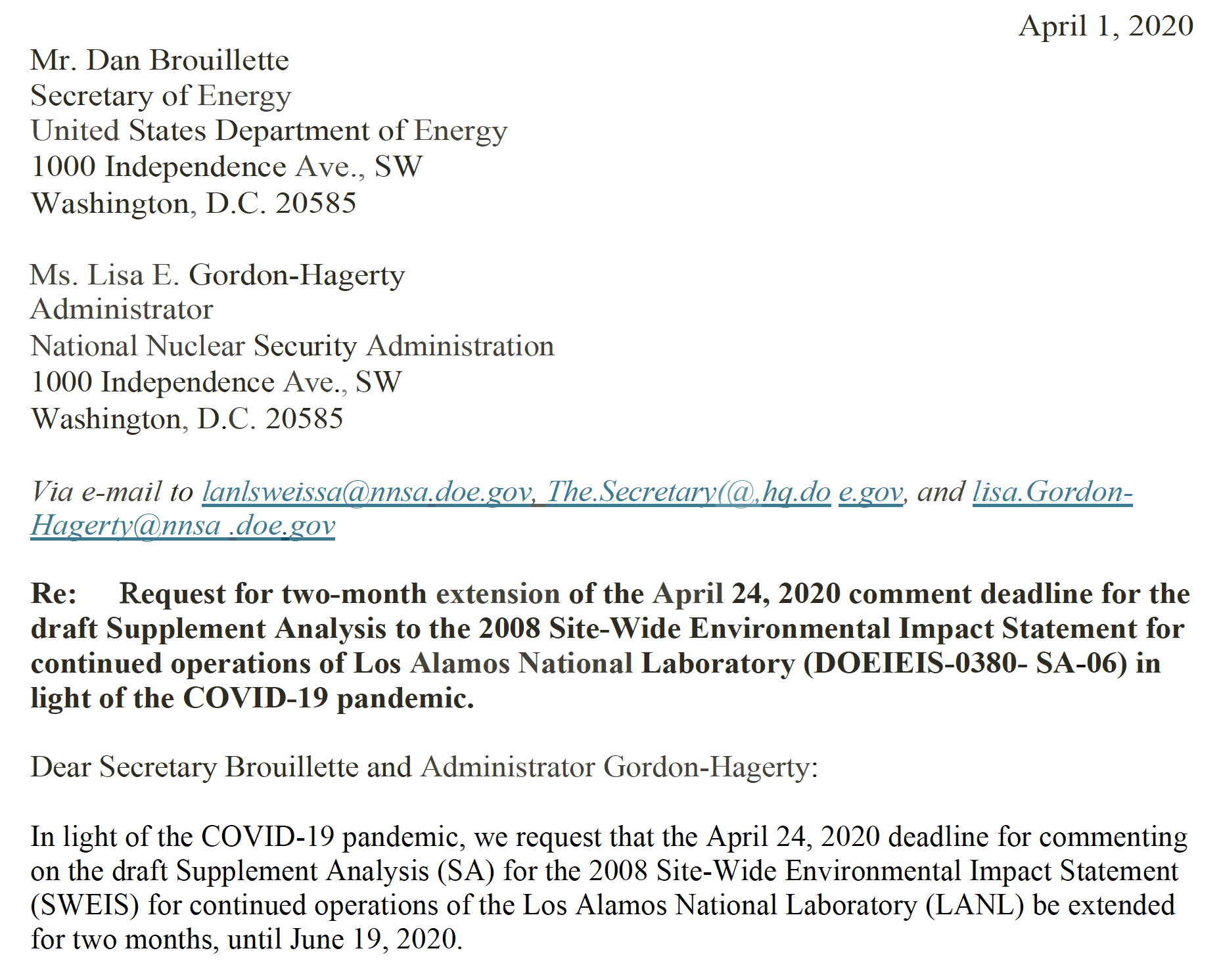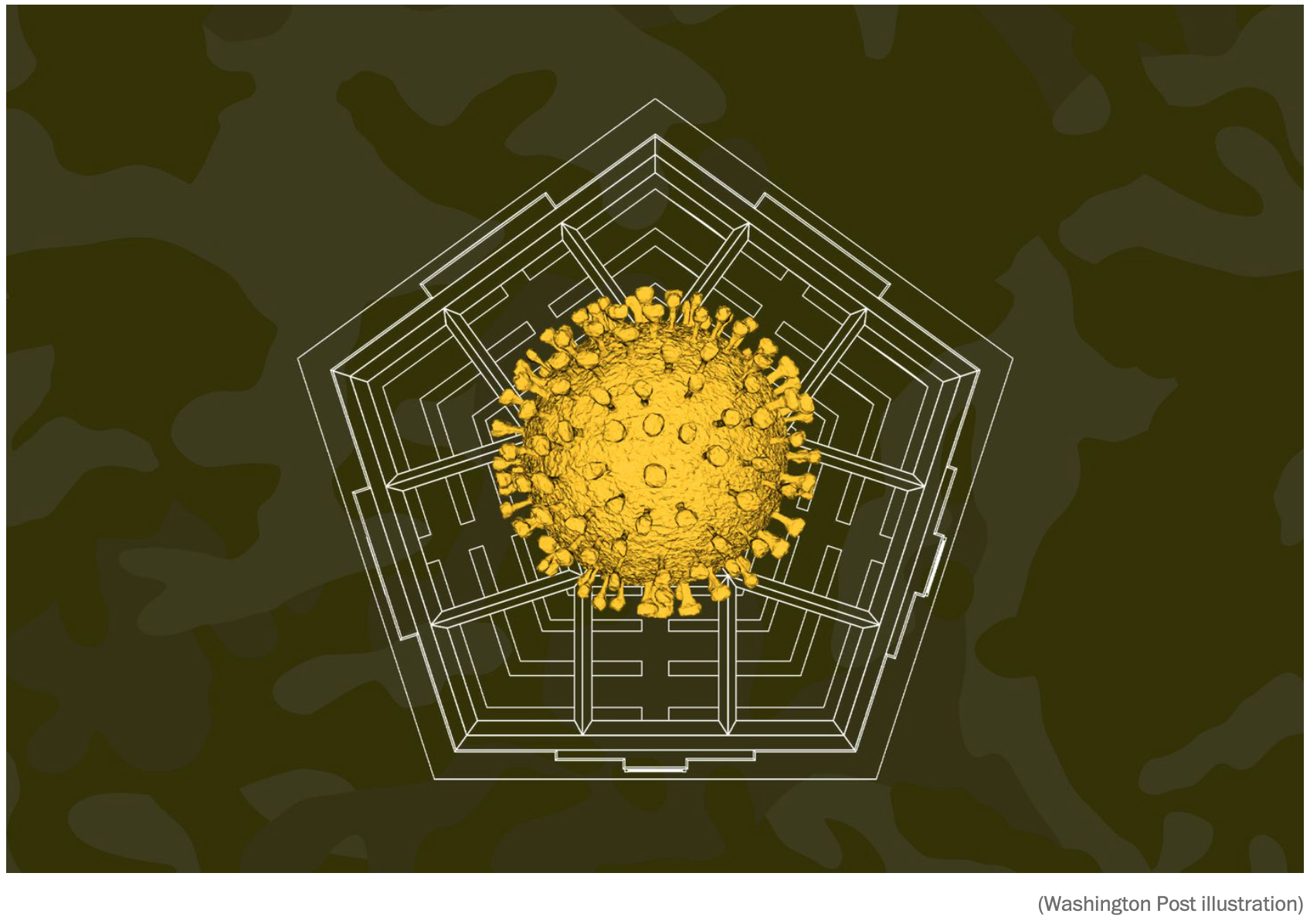Archives: New & Updated
Covid-19 is Killing Off Our Traditional Notions of National Defense
“It never made any sense, as Trump’s 2021 budget had initially proposed, to increase spending on nuclear weapons by $7 billion while cutting Centers for Disease Control and Prevention funding by $1.2 billion.”
I have always been a strong supporter of the U.S. armed forces, because I believe they are needed to safeguard our freedom and prosperity in a dangerous world. But even hawks like me cannot be blind to the prevalence of “black swan” events in the past 20 years.
NPT Review Conference To Be Postponed
“The specter of unconstrained nuclear competition looms over us for the first time since the 1970s. We are witnessing what has been termed a qualitative nuclear arms race, one not based on numbers but on faster, stealthier and more accurate weapons. Regional conflicts with a nuclear dimension are worsening, and proliferation challenges are not receding,” United Nations High Representative for Disarmament Affairs Izumi Nakamitsu
Daryl G. Kimball, executive director | armscontrol.org
The global coronavirus disease (COVID-19) pandemic has forced a postponement of the 10th review conference of the nuclear Nonproliferation Treaty (NPT), possibly until early 2021. Originally scheduled to be held at UN headquarters in New York from April 27 until May 22, the conference typically involves hundreds of representatives from most of the 191 states-parties to the treaty, as well as nongovernmental organizations and meeting support personnel. The conference caps off a five-year cycle of meetings through which states-parties review implementation and compliance with the treaty and seek agreement on action steps to overcome new challenges and to fulfill core goals and objectives.
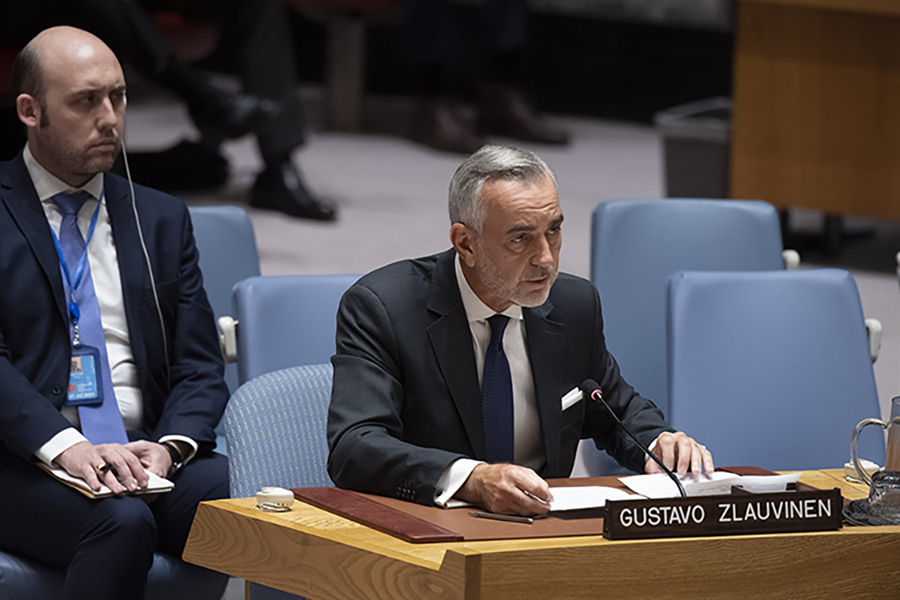
PENTAGON ASKS TO KEEP FUTURE SPENDING SECRET

“At a time when it is clear to everyone that US national security spending is poorly aligned with actual threats to the nation, the DoD proposal would make it even harder for Congress and the public to refocus and reconstruct the defense budget.”
The Department of Defense is quietly asking Congress to rescind the requirement to produce an unclassified version of the Future Years Defense Program (FYDP) database.
Preparation of the unclassified FYDP, which provides estimates of defense spending for the next five years, has been required by law since 1989 (10 USC 221) and has become an integral part of the defense budget process.
But the Pentagon said that it should no longer have to offer such information in an unclassified format, according to a DoD legislative proposal for the pending FY 2021 national defense authorization act.
New study says LANL nuclear pit production could go higher
Jay Coghlan, executive director of Nuclear Watch New Mexico, said he doubted the lab has the “expertise and competence” to produce 80 plutonium pits, “but they’re going to eat up taxpayers’ money.” Coghlan said he’s also concerned about defense leaders refusing to use the thousands of pits stockpiled during the Cold War and instead favoring new, heavily modified pits. That raises the question of whether the Pentagon might resume nuclear testing on these untried cores instead of computer simulations.
BY: SCOTT WYLAND | santafenewmexican.com
Los Alamos National Laboratory should be able to produce 80 plutonium pits to meet surges in demand, not just the official goal of 30 pits a year, according to a proposed update to the lab’s last sitewide analysis.
Defense plans call for the lab to produce 30 pits — the grapefruit-sized explosive centers in nuclear warheads — in 2026 and the Savannah River Site to manufacture 50 in 2030.
ONE YEAR OF U.S. NUCLEAR WEAPONS SPENDING WOULD PROVIDE 300,000 ICU BEDS, 35,000 VENTILATORS AND SALARIES OF 75,000 DOCTORS
MATTHEW IMPELLI | newsweek.com
The amount of money spent in one year by the U.S. on nuclear weapons could instead provide 300,000 ICU (intensive care unit) beds, 35,000 ventilators and 75,000 doctors’ salaries, according to the International Campaign to Abolish Nuclear Weapons (ICAN)–a “coalition of non-government organizations promoting adherence to and implementation of the UN [United Nations} nuclear weapon ban treaty.”
In its recent report, the group stated that, according to armscontrol.org, the U.S. spent $35.1 billion on nuclear weapons in 2019. The costs are based on reported averages, but the study noted that the $35.1 billion in nuclear weapons spending would instead pay for “300,000 beds in intensive care units, 35,000 ventilators, and the salaries of 150,000 U.S. nurses and 75,000 U.S. doctors.”
E.P.A., Citing Coronavirus, Drastically Relaxes Rules for Polluters
“Environmental groups and former Obama administration officials described the policy as an unprecedented relaxation of rules for petrochemical plants and other major polluters.”

WASHINGTON — The Environmental Protection Agency on Thursday announced a sweeping relaxation of environmental rules in response to the coronavirus pandemic, allowing power plants, factories and other facilities to determine for themselves if they are able to meet legal requirements on reporting air and water pollution.
The move comes amid an influx of requests from businesses for a relaxation of regulations as they face layoffs, personnel restrictions and other problems related to the coronavirus outbreak.
Trump’s Environmental Rollbacks Find Opposition Within: Staff Scientists
“Federal scientists and lawyers, told to undo regulations that some have worked on for decades, have embedded data into technical documents that environmental lawyers are using to challenge the rollbacks.”
ARTICLE BY: CORAL DAVENPORT | nytimes.com
“WASHINGTON — President Trump has made rolling back environmental regulations a centerpiece of his administration, moving to erase Obama-era efforts ranging from landmark fuel efficiency standards and coal industry controls to more routine rules on paint solvents and industrial soot.
The Coronavirus and the Urgent Need to Redefine National Security
“In order to address serious domestic concerns [such as coronavirus], the United States must seek significant savings by reducing the Pentagon budget, ending endless wars, and returning to the arms control and disarmament arena.”
ARTICLE BY: MELVIN GOODMAN | counterpunch.org
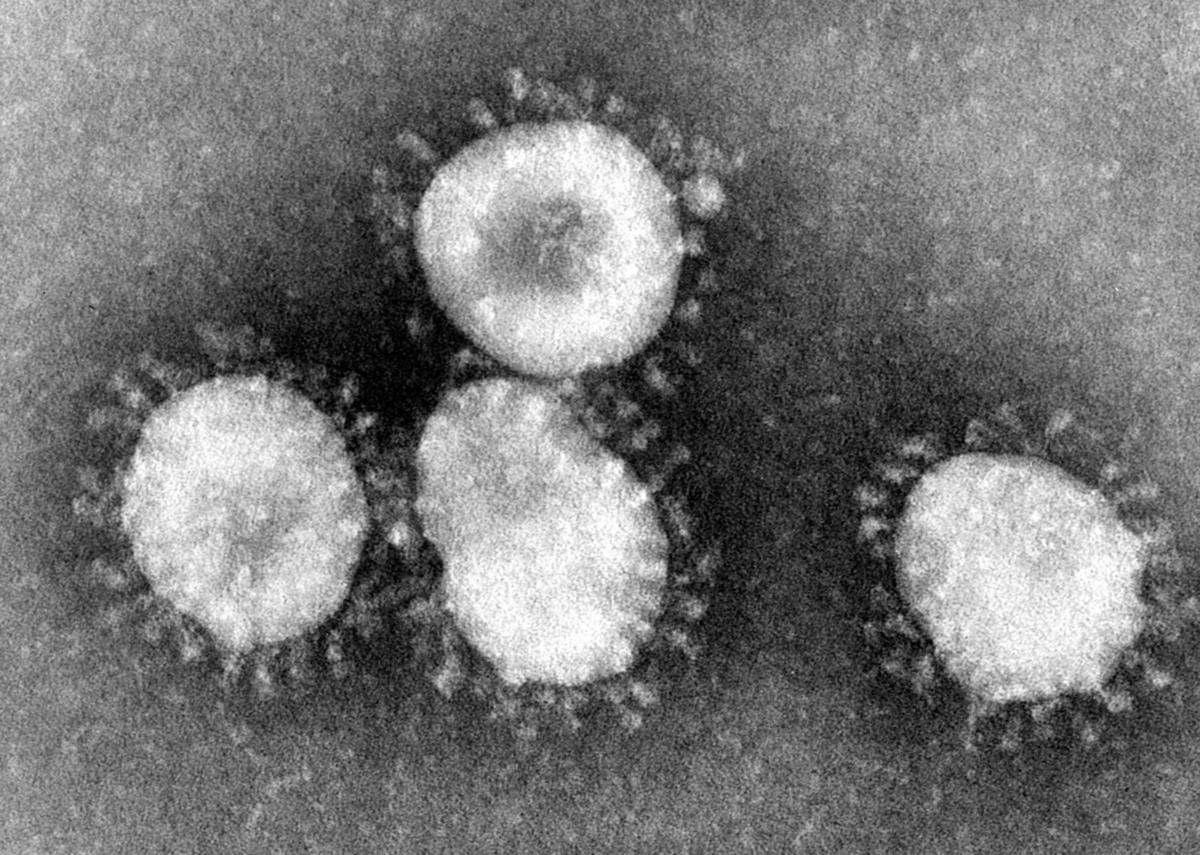
For far too long, the United States has been wastefully spending its precious budgetary resources on a nineteenth-century military strategy and a strategic arms policy that has brought no advantages to the American people. For the past three decades, our national security policies have been ineffectual and irrelevant to the genuine threats we face today. These threats do not emanate from Russia or China. Rather, they stem from an underfunded and highly vulnerable public health system, a cyber world that is out of control, and a crumbling infrastructure. In 2017, the American Society of Civil Engineers gave a grade of D-plus to the nation’s infrastructure, with the lowest grades going to roads, bridges, mass transit, and water management systems.
LANL set to release radioactive vapors
Los Alamos National Laboratory will release radioactive vapors into the atmosphere to ventilate several barrels of tritium-tainted waste generated during the Cold War. Jay Coghlan, executive director of Nuclear Watch New Mexico, said in the 1990s he won a lawsuit against the Energy Department for falsely claiming a building’s “shielding factor” kept radioactive emissions within federal limits.
“The undocumented assertion in the application that half of the tritium could remain behind in equipment should be viewed with suspicion,” Coghlan said.
ARTICLE BY: SCOTT WYLAND | santafenewmexican.com
The lab informed the U.S. Environmental Protection Agency earlier this month that it would ventilate four waste containers, beginning April 17, to relieve the built-up, radioactive hydrogen in the barrels’ headspace to prevent them from rupturing while they’re being handled. The EPA approved the application for the radioactive release last year.
Groups Request DOE Publish “Notice” of Release of Plutonium Bomb Document in Federal Register
“Request to Publish Notice of Draft Supplement Analysis in the Federal Register, DOE/EIS-0380-SA-06: Draft Supplement Analysis”
Public interest groups working for US DOE to fully comply with the National Environmental Policy Act (NEPA) in its unjustified plans to produce more plutonium “pits” for new and refurbished nuclear weapons have written to DOE concerning plans for expanded pit production at the Los Alamos National Lab in New Mexico. The lawyer for SRS Watch, Nuclear Watch New Mexico (Santa Fee, NM) and Tri-Valley CARES (Livermore, CA) wrote to DOE’s National Nuclear Security Administration (NNSA) on March 20, 2020, requesting that NNSA publish in the Federal Register a notice that a document on pit production was released on March 10, 2020 and, further, that it be opened for a 45-day comment period from the date of publication in the Federal Register.
The group letter is posted here: Request for Publication of Notice of Draft SA in Federal Register March 20 2020
Undisclosed delays plague atomic programs, cost billions to fix
“The Trump administration wants $3.1 billion more this year than last for the Energy Department’s nuclear weapons budget, but internal government documents show the raise is devoted substantially to covering previously undisclosed cost overruns and avoiding years of new delays in the majority of U.S. atomic weapons programs.”
ARTICLE BY: JOHN M. DONNELLY | rollcall.com
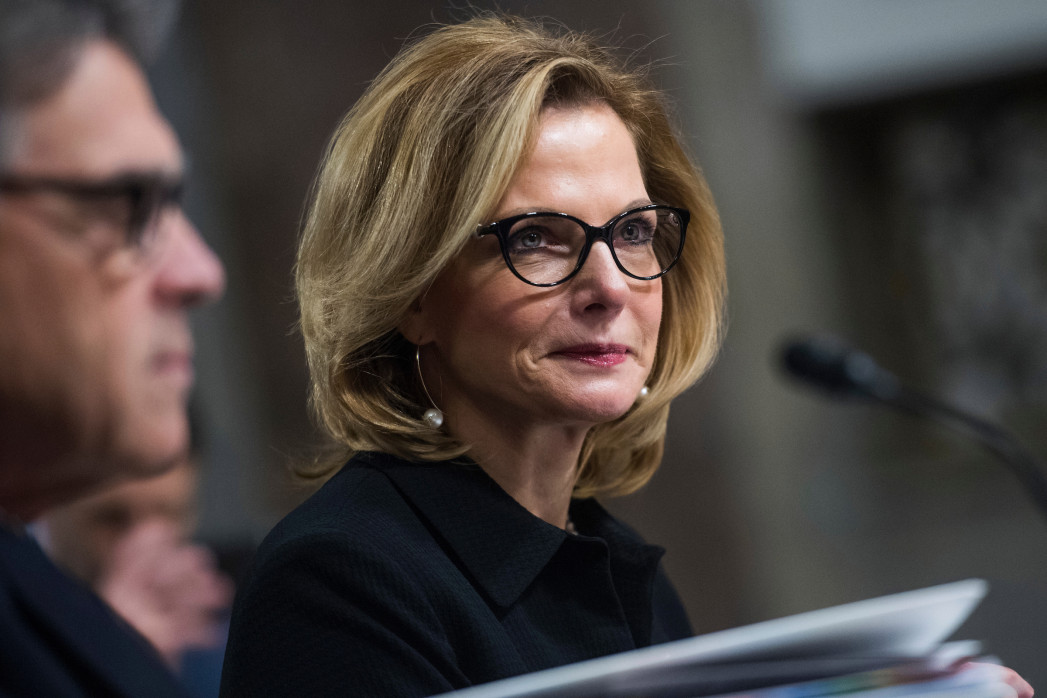
The new NNSA budget request is the latest example of the agency’s long-running problems
The Trump administration wants $3.1 billion more this year than last for the Energy Department’s nuclear weapons budget, but internal government documents show the raise is devoted substantially to covering previously undisclosed cost overruns and avoiding years of new delays in the majority of U.S. atomic weapons programs.
The administration has sold the 25 percent budget boost for the National Nuclear Security Administration only in broad terms as necessary to maintain America’s nuclear deterrent. However, the additional funds are needed not so much to advance capabilities as merely to keep troubled programs from falling further behind, according to the “official use only” correspondence obtained by CQ Roll Call.
More Information on Tritium’s Significant Hazards
Routine Radioactive Releases from U.S. Nuclear Power Plants. An update to our comprehensive list and map of all operating U.S. reactors and where they release radioactivity into the air and water. Every nuclear power reactor dumps radioactive water, scatters radioactive particles, and disperses radioactive gases as part of its routine, everyday operation. It doesn’t take an accident. Federal regulations permit these radioactive releases. Any exposure to radiation increases the risk of damage to tissues, cells, DNA, and other vital molecules, potentially causing genetic mutations, cancers, leukemias, birth defects, and reproductive, cardiovascular, endocribe, and immune system disorders.
The pamphlet lists all reactors operating at the October 2015 press time. For an up to date track of reactors as they close, please visit our Reactors Are Closing page
[This pamphlet is broader than just tritium, but tritium plays a significant part. See especially the discussion of how hazardous even a couple of curies of hazardous radioactivity, badly handled, can be.]
Reports
Leak First, Fix Later: Uncontrolled and Unmonitored Radioactive Releases from Nuclear Power Plants
UPDATED!
Leak First, Fix Later: Uncontrolled and Unmonitored Radioactive Releases from Nuclear Power Plants. May 2015. Newly revised and updated from the original, Leak First is a Beyond Nuclear report on the persistent and ongoing leaking of radioactive effluent into ground and surface water from uninspected and unmaintained buried piping under every nuclear power plant.
UPDATED!
Executive Summary. May 2015.
Note: New leaks occur often and at multiple nuclear reactor sites. Watch this page for updates on new leaks and spills.
LANL waste is unearthed at housing site
A utility crew found hazardous waste buried on land the U.S. Energy Department had transferred to Los Alamos County, stalling work on an affordable housing project.
ARTICLE BY: SCOTT WYLAND | santafenewmexican.com
The discovery of low-level radioactive waste 7 to 12 feet in the ground off DP Road last month prompted the state Environment Department to write a letter that ordered the agency to supply more information about the waste, how it got there and how the agency planned to avoid future incidents.
The state agency is “extremely concerned” about the contamination unearthed on a former Los Alamos National Laboratory site and “the potential threat to human health and the environment,” wrote Kevin Pierard, the department’s Hazardous Waste Bureau chief, in a Feb. 28 letter.
Pierard demanded Energy Department and lab officials submit data on the site and the sources of contamination, as well as tests and investigations that were conducted.
“We are currently investigating and characterizing the waste located at the site to determine the extent of the contamination,” Energy Department managers wrote in response.
The waste was placed in three drums and moved to another site for further analysis, the Energy Department said. Crews have fenced off the construction site, covered it with tarp and posted signs to keep people out, the letter said.
What is real national security? Comprehensive public health or more nuclear weapons?
Public Health as a National Security Concern
“Different perspectives on what “security” means compete for attention, and the literature that brings public health and national security together forces those in public health to contemplate these different perspectives and how they relate to the public health mission of protecting population health.” — Fidler, David P., “Public Health and National Security in the Global Age: Infectious Diseases, Bioterrorism, and Realpolitik”
9th Anniversary of Fukushima Daiichi Nuclear Disaster
Nine years have passed since the Great East Japan Earthquake and ensuing tsunami struck the Tohoku region on March 11, 2011, causing the disastrous accident at the TEPCO Daiichi nuclear power plant. The impacts of this nuclear disaster continue to this day.
We join together with people around the world to stand with the victims and continue working towards a peaceful world without nuclear power and nuclear weapons.
“Proud to be an American?” What an American admiral forgets about nuclear war
“Today, all these years later, the Trump administration is much more focused on acquiring new nuclear weapons systems than constraining or eliminating them. And the White House seems all too eager to walk away from the treaties and tools that were built to reduce these weapons’ greatest risks.”
MONICA MONTGOMERY | thebulletin.org

In late February, Adm. Charles Richard, head of US Strategic Command, told a House committee that the innovations going into a new nuclear warhead are what make him “proud to be an American.”
He was referring to the W93, a new nuclear warhead that will be used on submarine-launched ballistic missiles and that the Trump administration wants $53 million to start work on this year. While the design and timeline remain unclear, the administration forecasts that the price tag for developing and building this new weapon will reach over $1 billion per year in the next four years. The W93 would join or replace at least three other submarine-launched nuclear warheads that already exist and for which billions already have been and are still being spent to modernize.
Non-Proliferation Treaty turns 50 as US funds new nukes
“You can’t preach temperance from a bar stool, you can’t tell others not to have nuclear weapons when you’re busy ‘modernizing’ your own.”
ARTICLE BY: JAY COGHLAN / NUCLEAR WATCH NEW MEXICO | abqjournal.com
Thursday marked the 50th anniversary of the Non-Proliferation Treaty, whose central bargain was that non-nuclear weapons states forswore acquiring them in exchange for which nuclear weapons states promised to enter into serious negotiations leading to their elimination. Those negotiations have never happened.
The Trump Administration has marked the occasion by finally releasing the detailed fiscal year 2021 Congressional Budget Request for the Department of Energy’s semi-autonomous nuclear weapons agency, the National Nuclear Security Administration. The NNSA’s program for new and upgraded nuclear weapons gets a $3 billion-plus mark-up to $15.6 billion, slated to jump to $17 billion annually by 2025.
Sandia Labs may get $300 million budget increase
Meanwhile, “[Los Alamos] laboratory’s funding for the cleanup of radioactive waste it produced during the Manhattan Project and Cold War would decrease by $100 million.”
SCOTT TURNER | abqjournal.com Copyright © 2020 Albuquerque Journal
Sandia National Laboratories would receive a $300 million increase in federal funding under President Donald Trump’s proposed fiscal 2021 budget.
Most of the increase involves the labs’ nuclear weapons program, Sandia officials told the Journal.
Progressive lawmakers waging new NDAA fight
“This administration has no regard for Congress, and unless we put in very strict parameters around our funding support and our authorization, they’re just going to continue to roll all over us.” – Rep. Pramila Jayapal (D-Wash.), co-chair of the Congressional Progressive Caucus
Progressive House Democrats are eyeing a new push to roll their top agenda items into the National Defense Authorization Act this spring, Connor O’Brien reports, as they seek to seize on support for their legislation but also anxiety over Trump’s expansive war powers and his diversion of military funding for the border wall.
The left wing of the Democratic caucus is still smarting after feeling they got rolled on attempts to block a military confrontation with Iran, head off a shift in Pentagon funds toward the border wall, limit nuclear weapons spending, reverse restrictions on transgender troops and withdraw U.S. military support in Yemen’s civil war.
“They note that not long after last year’s bill failed to require Congress to sign off on war with Iran, repeal the 2002 Iraq war authorization and limit Trump’s ability to move money, Trump ordered the killing of a top Iranian commander and moved to sap billions more from the Pentagon’s coffers for the wall,” O’Brien reports.
The White House gave this nuclear agency a giant funding increase. Can it spend it all?
“The proposed $3.1 billion increase for weapons is simply sprinting toward failure, and Congress should right-size NNSA’s workload to match what the complex can realistically do,” – Rep. Marcy Kaptur, D-Ohio
ARTICLE BY: AARON MEHTA | defensenews.com
WASHINGTON — Members of Congress used a hearing Tuesday to question whether the National Nuclear Security Administration, a semiautonomous arm of the Department of Energy that handles development of nuclear warheads, can spend an almost 20 percent funding increase requested by the Trump administration.
Heinrich grills energy secretary on proposed $100M budget cut for LANL cleanup
“I can’t understand why this administration does not value cleanup and would risk breaking the legal commitments [the Department of Energy] has made to the state of New Mexico with budget numbers like that,” Heinrich said. “Why is the cleanup number so abysmal in this budget?”
ARTICLE BY: SCOTT WYLAND | santafenewmexican.com March 3, 2020
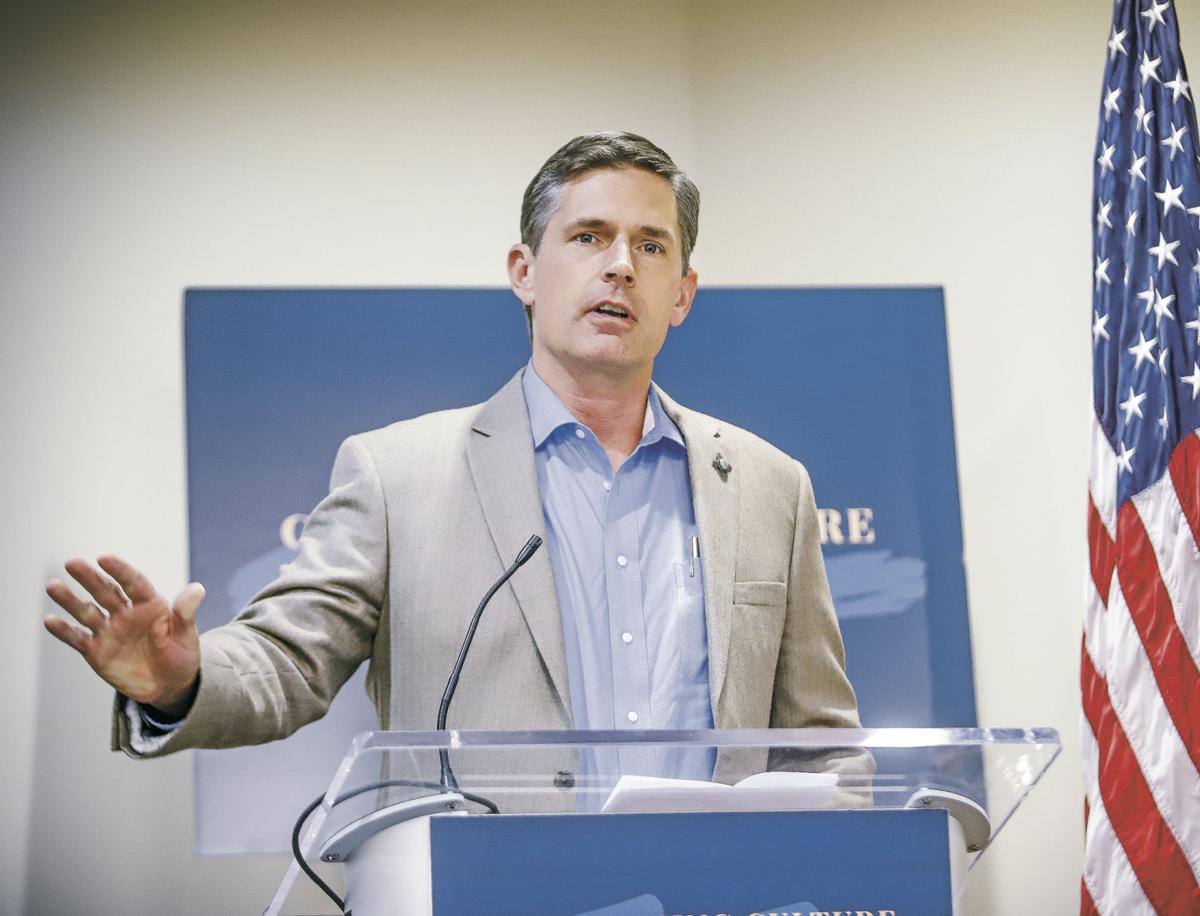
U.S. Sen. Martin Heinrich fired tough questions and caustic comments at Energy Secretary Dan Brouillette on Tuesday over the proposed $100 million cut in Los Alamos National Laboratory’s cleanup program for radioactive waste it produced during the Manhattan Project and Cold War.
Nuclear Tests Marked Life on Earth With a Radioactive Spike
Even as it disappears, the “bomb spike” is revealing the ways humans have reshaped the planet.
STORY BY: CARL ZIMMER | theatlantic.com
On the morning of March 1, 1954, a hydrogen bomb went off in the middle of the Pacific Ocean. John Clark was only 20 miles away when he issued the order, huddled with his crew inside a windowless concrete blockhouse on Bikini Atoll. But seconds went by, and all was silent. He wondered if the bomb had failed. Eventually, he radioed a Navy ship monitoring the test explosion.
“It’s a good one,” they told him.
Then the blockhouse began to lurch. At least one crew member got seasick—“landsick” might be the better descriptor. A minute later, when the bomb blast reached them, the walls creaked and water shot out of the bathroom pipes. And then, once more, nothing. Clark waited for another impact—perhaps a tidal wave—but after 15 minutes he decided it was safe for the crew to venture outside.
The mushroom cloud towered into the sky. The explosion, dubbed “Castle Bravo,” was the largest nuclear-weapons test up to that point. It was intended to try out the first hydrogen bomb ready to be dropped from a plane.

